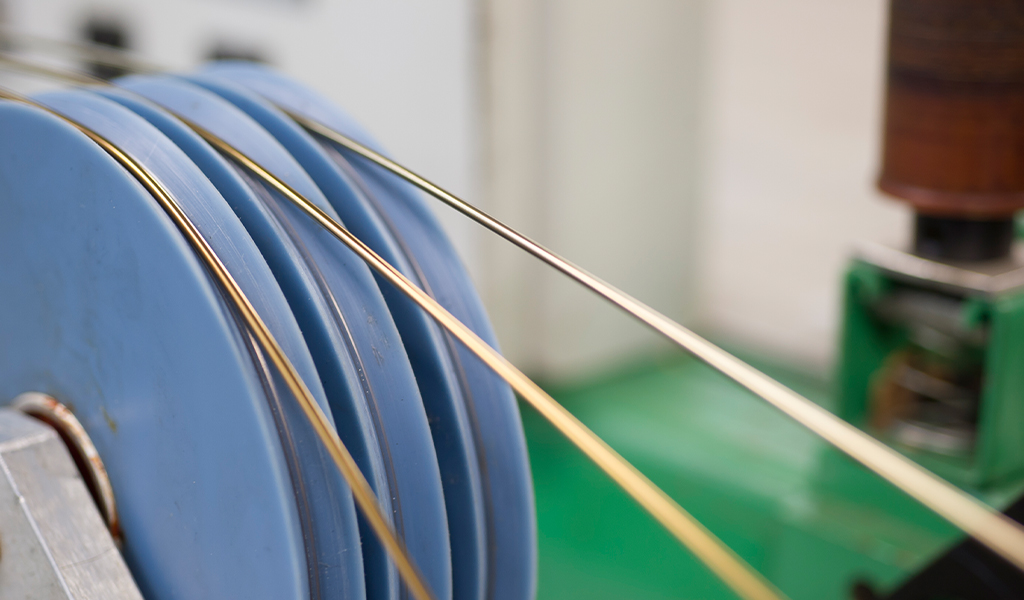Optimizing medical devices: The effect of platinum on Nitinol DFT® composite wire

Fort Wayne Metals is dedicated to pushing the boundaries of materials science, delivering precision-engineered solutions for the world’s most demanding applications. With expertise in advanced wire manufacturing, the company supports industries where performance, reliability, and innovation are paramount.
In this technical blog, Senior Engineer, Jenica Kolhoff and Dr. Jeremy Schaffer provide insights into the materials, processes, and engineering advancements that drive better outcomes.
The medical device industry is constantly innovating to create smaller, more effective tools that improve patient outcomes. Among these advancements is the development of Nitinol DFT® wire with a platinum core, a material combining the superelastic properties of Nitinol with the radiopacity of platinum. This breakthrough, now two decades running, enables enhanced imaging visibility and mechanical performance, addressing critical challenges in designing minimally invasive medical devices.
Enhancing performance: The role of platinum in Nitinol alloys
Superelastic Nitinol is a preferred material in medical applications due to its shape memory and flexibility. However, the fine diameter of many medical wires reduces visibility under X-ray imaging, a limitation that can hinder precision during procedures. To address this, Fort Wayne Metals developed Nitinol DFT® composite wire, integrating a superelastic Nitinol sheath with a platinum core, and has continued to refine process and material performance since its early 2000s inception. This combination leverages Nitinol’s mechanical advantages and platinum’s radiopacity, creating a wire with properties tailored to medical device specifications.
Key findings: How platinum content affects performance
This study investigated how varying platinum core percentages (10%, 20%, 30%, and 40%) impact the performance of Nitinol DFT® composite wire. The team conducted several tests to evaluate mechanical properties, superelastic behavior, and fatigue performance.
- Bend and free recovery: Increasing the platinum content reduced the wire's ability to recover its original shape after deformation. Wires with higher platinum percentages required more energy (heat) to return to their initial form, showing a more sluggish recovery. For example, the "Active Af" (transformation temperature) increased by approximately 6°C for wires with a 40% platinum core compared to solid Nitinol.
- Tensile properties: Higher platinum content also decreased tensile and plateau stresses, while increasing residual elongation. This indicates that devices made from wires with larger platinum cores may exhibit reduced expansion forces and less shape recovery after deformation.
- Fatigue performance: Despite these changes, platinum content did not significantly affect rotating bending fatigue performance. Both solid Nitinol and composite wires with various platinum percentages achieved over 10 million cycles at low strain levels (0.9%), demonstrating the material’s durability under cyclic loading.
Implications for medical device design
The findings highlight the need to carefully balance radiopacity and mechanical performance when incorporating platinum into Nitinol wires. While a higher platinum core improves visibility under imaging, it also compromises some of Nitinol’s hallmark superelastic properties. Designers must weigh these trade-offs depending on the device’s intended application.
For example, cardiovascular stents requiring precise placement under X-ray may benefit from a higher platinum content, prioritizing radiopacity. On the other hand, devices needing exceptional shape recovery, such as certain orthopedic implants, may favor lower platinum percentages to retain Nitinol’s full superelastic potential.
Conclusion
Nitinol DFT® with a platinum core represents a significant step forward in advancing medical device technology. By integrating two complementary materials, it provides a versatile solution for applications requiring both visibility and mechanical precision. As research continues, further refinements in wire composition and processing could unlock even greater performance, paving the way for next-generation medical devices.
Want to discuss how our materials may support your next innovation? Connect with our team!
Categories: Medical device materials, Nitinol DFT®

